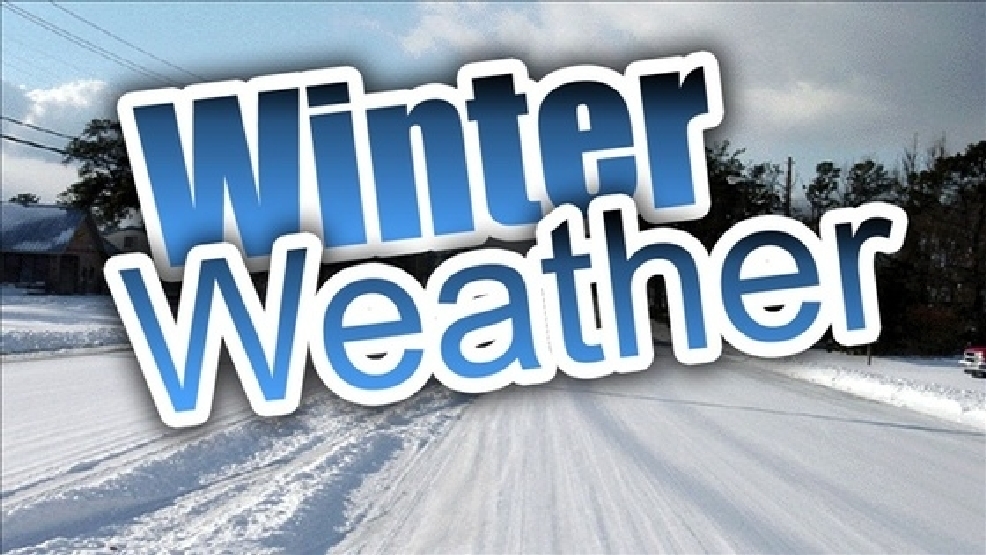Understanding Winter Weather Advisories And School Delays

Table of Contents
Deciphering Winter Weather Advisories & Warnings
Winter storm warnings, winter weather advisories, blizzard warnings—the terminology can be confusing. Knowing the difference between these alerts issued by the National Weather Service (NWS) is key to understanding the severity of the impending weather and taking appropriate action. Understanding these alerts helps you anticipate potential school delays or closings.
- Winter Weather Advisory: This advisory indicates that periods of snow, sleet, freezing rain, or strong winds will cause travel difficulties. While not as severe as a warning, it's still a signal to prepare. Expect difficult driving conditions and be cautious. School delays are possible, but not guaranteed.
- Winter Storm Warning: This is a more serious alert indicating severe winter conditions are happening now or will soon begin. Significant accumulations of snow, ice, or strong winds are expected, creating hazardous travel conditions. School delays or closures are highly likely.
- Blizzard Warning: This is the most severe winter weather alert, indicating sustained high winds and heavy snow creating near-zero visibility for at least three hours. Travel is extremely dangerous, and school closures are almost certain.
- Ice Storm Warning: This warning means significant ice accumulation is expected, potentially causing power outages, tree damage, and extremely hazardous travel conditions. School closures are highly probable.
How School Districts Decide on Delays and Closings
School districts consider numerous factors when making the critical decision to delay or close schools due to winter weather. Safety is the paramount concern.
- Assessment of road conditions and predicted weather: School districts monitor weather forecasts and road conditions closely, consulting with local authorities and transportation departments.
- Bus routes and accessibility: Impassable roads, icy conditions, and reduced visibility significantly impact bus routes and the ability to safely transport students.
- Safety of students walking or biking to school: Iced sidewalks and roads pose significant safety risks to students walking or biking.
- Communication with local authorities: School districts work closely with local emergency management and transportation officials to assess conditions and make informed decisions.
- Staff availability: The ability of staff to safely reach schools is also factored into the decision-making process.
Where to Find School Closure Information
Knowing where to find reliable information about school closings is essential.
- Check your school district's website regularly: Most school districts post closure information prominently on their websites.
- Subscribe to school alert systems (email, text, app): Many districts offer notification systems to send alerts directly to parents.
- Listen to local news and radio stations: Local news outlets often provide timely updates on school closures.
- Monitor social media for official announcements: School districts may also announce closures on social media platforms.
Preparing for Winter Weather and School Delays
Proactive preparation can significantly reduce stress and disruption during winter weather events and subsequent school delays or cancellations.
- Create a winter emergency kit with essential supplies: Include flashlights, batteries, extra blankets, first-aid supplies, and non-perishable food.
- Have a backup childcare plan in case of school closures: Arrange for alternative childcare options in advance, such as a neighbor, family member, or childcare center.
- Ensure you have access to remote learning resources if needed: Check with your school about their remote learning policy and ensure you have the necessary technology and internet access.
- Charge devices and have a backup power source ready: Keep phones, laptops, and other electronic devices fully charged, and consider having a portable power bank or generator.
- Keep a weather radio handy for updates: A weather radio provides real-time weather alerts and updates, even during power outages.
Conclusion
Understanding winter weather advisories and knowing how they impact school schedules is vital for responsible planning. By staying informed and prepared, you can minimize disruptions and ensure the safety of your family. Stay informed about winter weather advisories in your area and be prepared for potential school delays. Develop a family plan to address school closures effectively. Regularly check your school district’s website and other reliable resources for the most up-to-date information regarding school delays and winter weather advisories. Proactive preparation is your best defense against the disruptions caused by winter weather.

Featured Posts
-
 Analyzing Klopps Impact How Liverpool Converted Doubters
May 21, 2025
Analyzing Klopps Impact How Liverpool Converted Doubters
May 21, 2025 -
 Bbai Stockholders Potential Legal Action Contact Gross Law Firm By June 10 2025
May 21, 2025
Bbai Stockholders Potential Legal Action Contact Gross Law Firm By June 10 2025
May 21, 2025 -
 Road To Money In The Bank 2025 Perez And Ripley Qualify
May 21, 2025
Road To Money In The Bank 2025 Perez And Ripley Qualify
May 21, 2025 -
 Re Examining Dexters Debra Arc In Light Of Original Sins Conclusion
May 21, 2025
Re Examining Dexters Debra Arc In Light Of Original Sins Conclusion
May 21, 2025 -
 Benjamin Kaellman Kasvutarina Huuhkajien Riveissae
May 21, 2025
Benjamin Kaellman Kasvutarina Huuhkajien Riveissae
May 21, 2025
Latest Posts
-
 How To Successfully Implement A Screen Free Week With Your Kids
May 22, 2025
How To Successfully Implement A Screen Free Week With Your Kids
May 22, 2025 -
 Vapors Of Morphine Low Rock Legends Northcote Show Get Tickets Now
May 22, 2025
Vapors Of Morphine Low Rock Legends Northcote Show Get Tickets Now
May 22, 2025 -
 See Vapors Of Morphine Low Rock Legends Live In Northcote
May 22, 2025
See Vapors Of Morphine Low Rock Legends Live In Northcote
May 22, 2025 -
 Northcote Concert Announcement Vapors Of Morphine Low Rock Legends
May 22, 2025
Northcote Concert Announcement Vapors Of Morphine Low Rock Legends
May 22, 2025 -
 Love Monster More Than Just A Cute Creature
May 22, 2025
Love Monster More Than Just A Cute Creature
May 22, 2025
